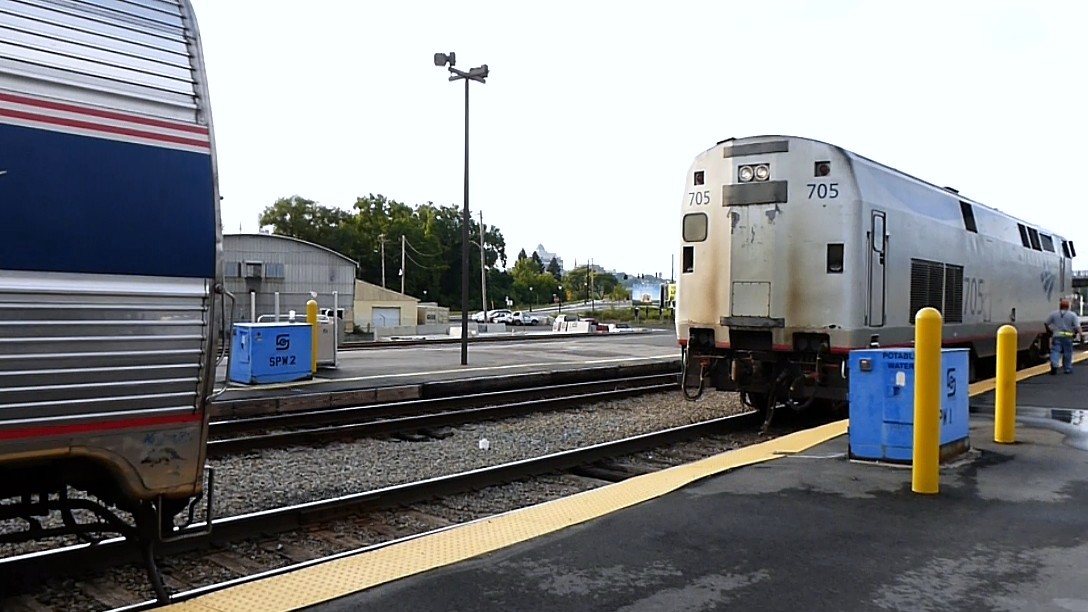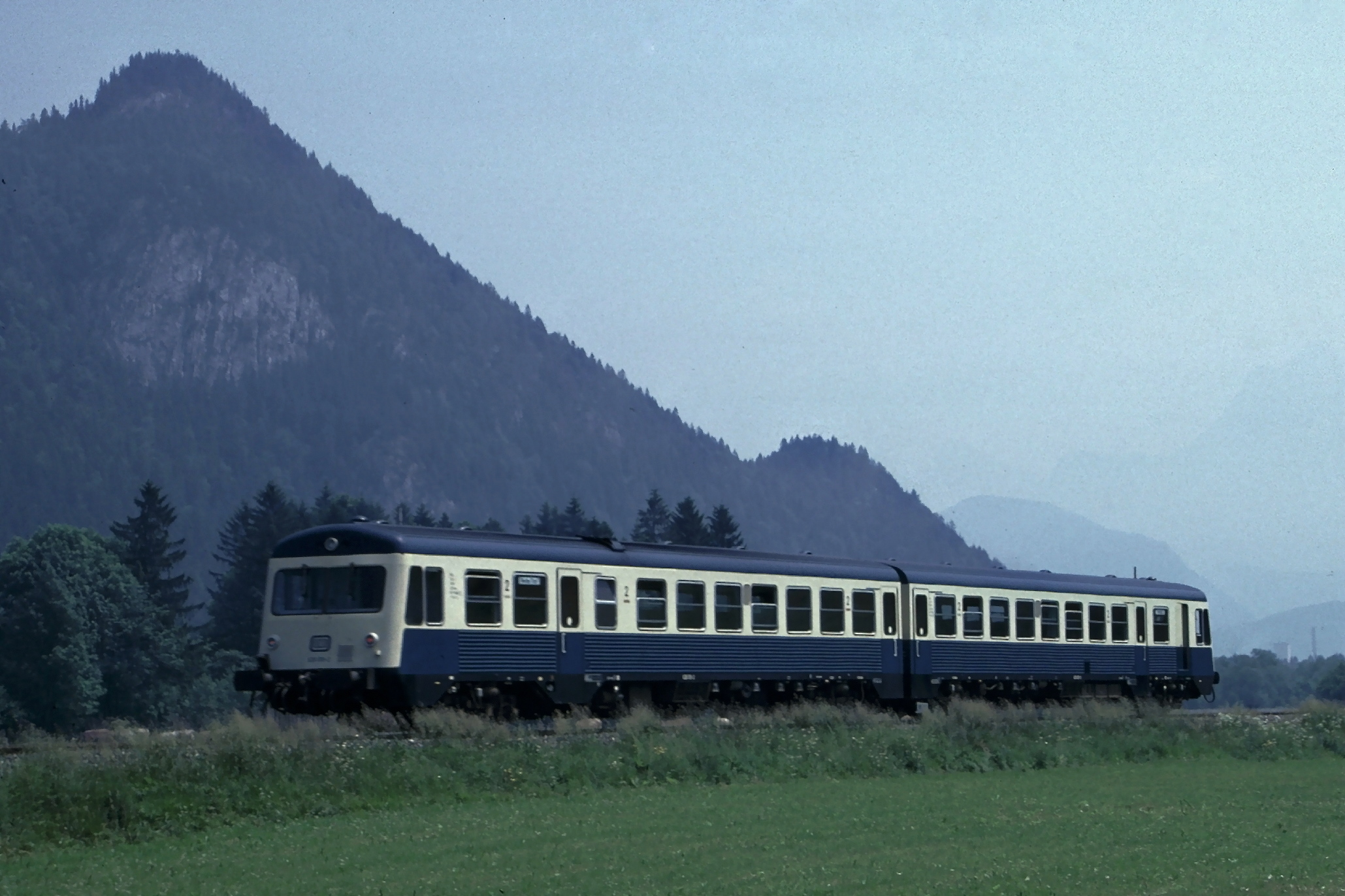|
Bocholt Railway Station
Bocholt is a station in Bocholt, North Rhine-Westphalia, Germany. It is now the terminus of the Rhein-IJssel-Express service. In the past trains ran in four directions, including to Winterswijk in the Netherlands. History The station was opened on 1 July 1878 by the Cologne-Minden Railway Company (''Cöln-Mindener Eisenbahn-Gesellschaft'', CME) together with the Bocholt–Wesel railway, which branched off its Oberhausen–Arnhem railway (known as the ''Hollandstrecke''–"Holland line") at Wesel. Just over two years later, on 25 August 1880, the ''Niederländisch-Westfälische Eisenbahn-Gesellschaft'' (Dutch-Westphalian Railway Company) opened the Winterswijk–Bocholt railway and the station became a through station. At the beginning of the 20th century, the Prussian state railways started building the Empel-Rees–Münster railway (''Baumbergebahn''). With the opening of the first section on 1 August 1901, Bocholt became a junction station and with the open ... [...More Info...] [...Related Items...] OR: [Wikipedia] [Google] [Baidu] |
Bocholt, Germany
Bocholt () is a city in the north-west of North Rhine-Westphalia, Germany, part of the district Borken. It is situated 4 km ( miles) south of the border with the Netherlands. Suderwick is part of Bocholt and is situated at the border annex to Dinxperlo. Geography The northern border of the city of Bocholt is the German border with the Netherlands. Bocholt borders the district of Wesel, in the administrative region of Düsseldorf, in the southwest. Bocholt is bordered in the north by the Dutch municipalities of Aalten and Winterswijk, in the east by the city of Rhede, in the south by the city of Hamminkeln, and in the west by the city of Isselburg. The climate in the region of Bocholt and West Münsterland is temperate with distinct maritime influences, with very mild winters in comparison to other German regions because of the proximity to the ocean and the low elevation. Summers are moderately warm. The average temperature in January is 2.7 °C (37 °F) and ... [...More Info...] [...Related Items...] OR: [Wikipedia] [Google] [Baidu] |
Duisburg Hauptbahnhof
Duisburg Hauptbahnhof is a railway station in the city of Duisburg in western Germany. It is situated at the meeting point of many important national and international railway lines in the Northwestern Ruhr valley. Lines The station is situated at the northern end of the relatively straight Cologne–Duisburg Railway, Duisburg to Düsseldorf railway line which has to cope with one of the highest daily loads in continental Europe. This line is slated to be widened to six tracks in the near future. Currently it has four—and in some places five—tracks. The Duisburg-Ruhrort–Mönchengladbach railway, line to Krefeld and Mönchengladbach runs to the south. This crosses the Rhine, River Rhine and then splits into the main line and a branch to Moers and Xanten at Rheinhausen. North of the station, seven tracks run to the Ruhr (river), River Ruhr crossing (which is a sight on the ''Route der Industriekultur'' (Route of industrial heritage) due to a maze of girder bridges) where Ob ... [...More Info...] [...Related Items...] OR: [Wikipedia] [Google] [Baidu] |
Oberhausen Hauptbahnhof
Oberhausen Hauptbahnhof is a railway station in Oberhausen, North Rhine-Westphalia, Germany. The station was opened in 1847 and is located on the Duisburg–Dortmund railway, Arnhem-Oberhausen railway, Oberhausen–Duisburg-Ruhrort railway and Oberhausen-Mülheim-Styrum railway and is served by ICE, IC, RE and RB services operated by Deutsche Bahn, Abellio Deutschland, NordWestBahn and Eurobahn. History The station was opened in 1847 as part of the trunk line of the former Cologne-Minden Railway Company. The first station building at its present location—a simple half-timbered building and loading facility—was named after the nearby Schloss Oberhausen (palace) and opened on 15 May 1847. It was the first station on the territory of the former Bürgermeisterei of Borbeck; the city of Oberhausen did not exist at this time. The station initially serviced the developing heavy industry, centred on the ''Gutehoffnungshütte'' steel works. The entrepreneur Franz Haniel had i ... [...More Info...] [...Related Items...] OR: [Wikipedia] [Google] [Baidu] |
Düsseldorf Hauptbahnhof
Düsseldorf Hauptbahnhof is the main railway station of Düsseldorf, the state capital of North Rhine-Westphalia, Germany. History The station was opened on 1 October 1891. It replaced the three following stations: *the ''Bergisch-Märkische station'' of the Bergisch-Märkische Railway Company (BME), originally opened by the Düsseldorf-Elberfeld Railway Company in 1838 in the area that is now Graf-Adolf-Platz as a through station on the Düsseldorf–Elberfeld railway, company's east–west line from Elberfeld to its station at Rheinknie. *the ''Cologne-Minden station'' which the Cologne-Minden Railway Company (CME) opened in 1845 southeast of the BME station as a terminus to which branches were built from the company's north–south Cologne–Duisburg railway, Cologne–Duisburg main line, and *the ''Rhenish station'' built by the Rhenish Railway Company (RhE) in 1877 in Düsseldorf-Pempelfort at the end of a branch line from its north–south Troisdorf–Mülheim-Speldorf r ... [...More Info...] [...Related Items...] OR: [Wikipedia] [Google] [Baidu] |
Portion Working
A dividing train is a passenger train that separates into two trains partway along its route, so as to serve two destinations. Inversely, two trains from different origins may be railway coupling, coupled together mid-route to reach a common endpoint. Trains on complex routes may divide or couple multiple times. The general Glossary of rail transport terms, term for coupling two or more trains along their shared route sections is portion working. For example, the westbound ''Empire Builder'' travels from Chicago Union Station to , Washington, where its cars are divided into two trains: one continues to Portland Union Station and one to King Street Station, Seattle. On the eastbound trip, trains from Portland and Seattle are coupled at Spokane before traveling as one train to Chicago. Dividing trains are useful where line capacity is limited, allowing multiple trains to use the same train path, path over a congested part of a network. The common sections will often be the busiest ... [...More Info...] [...Related Items...] OR: [Wikipedia] [Google] [Baidu] |
Regional-Express
In Germany, Luxembourg and Austria, the Regional-Express (; RE, or in Austria: REX) is a type of regional train. It is similar to a semi-fast train, with a top speed of and an average speed of about as it calls at fewer stations than ''Regionalbahn'' (in Austria: '' Regionalzug'') or S-Bahn trains, but stops more often than ''Intercity'' or ''Intercity Express'' services. Operations The first Regional-Express services were operated by DB Regio, though since the liberalisation of the German rail market (''Bahnreform'') in the 1990s many operators have received franchise rights on lines from the federal states. Some private operators currently operate trains that are similar to a Regional-Express service, but have decided to use their own names for the sake of brand awareness instead. Regional-Express services are carried out with a variety of vehicles such as DMUs (of Class 612), EMUs (of Class 425 or 426) or, most commonly, electric or diesel locomotives with doub ... [...More Info...] [...Related Items...] OR: [Wikipedia] [Google] [Baidu] |
Vias (rail Company)
The Vias GmbH (stylized VIAS) is a rail service company based in Frankfurt (Germany). The name of the company was taken from the Latin word via for ''way'' and the letter ''S'' for service. It operates rail services in the states of Hesse, Rhineland-Palatinate and North Rhine-Westphalia. Owners The company was founded in 2005 by ''Stadtwerke Verkehrsgesellschaft Frankfurt am Main'' (VGF, the municipal transport company of Frankfurt) and Rurtalbahn GmbH (RTB) of Düren with both companies having equal shareholdings. In March 2010, DSB (railway company), Danish State Railways announced that it had taken over VGF's shareholding with the help of its subsidiary ''DSB Deutschland GmbH''. History On 22 October 2010, Düren-based ''Vias DN2011 GmbH'' was founded by its shareholders, ''DSB Deutschland GmbH'' and ''R.A.T.H. GmbH'' with the aim of providing rail services.Düren District Court file number: HRB 6597, new entries. Joint register portal of the states, 17 July 2013, access ... [...More Info...] [...Related Items...] OR: [Wikipedia] [Google] [Baidu] |
40bocholtalterbahnhof
4 (four) is a number, numeral and digit. It is the natural number following 3 and preceding 5. It is a square number, the smallest semiprime and composite number, and is considered unlucky in many East Asian cultures. Evolution of the Hindu-Arabic digit Brahmic numerals represented 1, 2, and 3 with as many lines. 4 was simplified by joining its four lines into a cross that looks like the modern plus sign. The Shunga would add a horizontal line on top of the digit, and the Kshatrapa and Pallava evolved the digit to a point where the speed of writing was a secondary concern. The Arabs' 4 still had the early concept of the cross, but for the sake of efficiency, was made in one stroke by connecting the "western" end to the "northern" end; the "eastern" end was finished off with a curve. The Europeans dropped the finishing curve and gradually made the digit less cursive, ending up with a digit very close to the original Brahmin cross. While the shape of the character for ... [...More Info...] [...Related Items...] OR: [Wikipedia] [Google] [Baidu] |
DB Class 628
The DB Class 628 is a twin-car, diesel multiple unit operated by the Deutsche Bahn for local passenger rail services. Design ''(The following description is primarily related to the Class 628.4, and is largely valid for the other variants as well)'' Each coach rests on two twin-axle bogies. Only the bogie at the close-coupled end of the coach is driven. Power transmission from the motor is achieved using a ''Voith'' hydrodynamic transmission system with a converter (''Wandler'') and a T 311r coupling. Up to Class 628, a T 320 double-converter transmission was used. Motor and transmission are suspended elastically under the lightweight coach body. The operating brake is an automatic compressed air brake, compressed air KE disc brake with automatic load braking and electronic anti-skid protection. In addition, for rapid braking, electromagnetic rail brakes are used; these can also be activated separately if required. Coupled running enables up to four coupled pairs of coaches to be ... [...More Info...] [...Related Items...] OR: [Wikipedia] [Google] [Baidu] |
Borken (Westf) Station
Borken (Westf) station () is the main station of the town of Borken and important transport hub of west Münsterland in the German state of North Rhine-Westphalia. Borken station is a former railway junction on the Gelsenkirchen-Bismarck–Winterswijk railway, the Empel-Rees–Münster railway and the Borken–Steinfurt railway. Since 1996, it has been the terminus of the only section of the Gelsenkirchen-Bismarck–Winterswijk line that is still operating. History The Dutch Westphalian Railway (NWE) began to build its Gelsenkirchen-Bismarck–Winterswijk line in 1878. It opened it together with the line from Borken-Gemen station as a through station on 21 June 1880. It was named Borken (Westphalia) station on 6 March 1883. The Prussian state railways (PSE) took over the line of the NWE in 1889. On 1 August 1902, it opened the Empel-Rees–Münster railway from Bocholt station, making Borken station into a railway junction. Just two months later, on 1 October 1902, the W ... [...More Info...] [...Related Items...] OR: [Wikipedia] [Google] [Baidu] |
Empel-Rees–Münster Railway
The Empel-Rees–Münster railway is a German regional railway that formerly connected Empel-Rees station, Empel-Rees, Bocholt station, Bocholt, Borken (Westf) station, Borken and Coesfeld (Westf) station, Coesfeld with Münster Hauptbahnhof, Münster. Today, only the eastern part of the line from Coesfeld/Lutum to Münster (Baumberge railway) as well as a freight track in Bocholt are in use. History The line was opened in 1908 by the Prussian state railways to access the western Münster (region), Münsterland. Besides some freight traffic, the railway never gained interregional importance. Passenger train services from Empel-Rees to Isselburg-Anholt were discontinued on September 30, 1961 and from Isselburg-Anholt to Coesfeld on May 26, 1974. Freight service mostly ended by June 1, 1991. In 1994, traffic between Coesfeld and Lutum was diverted to the track of the decommissioned railway to Rheine, as it was preserved better than the Baumberge railway. Service Today, the re ... [...More Info...] [...Related Items...] OR: [Wikipedia] [Google] [Baidu] |








